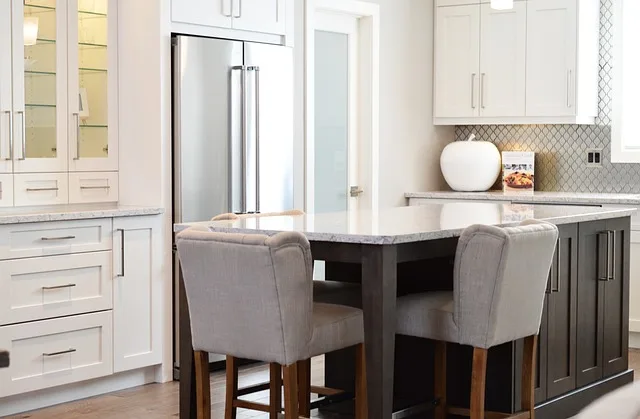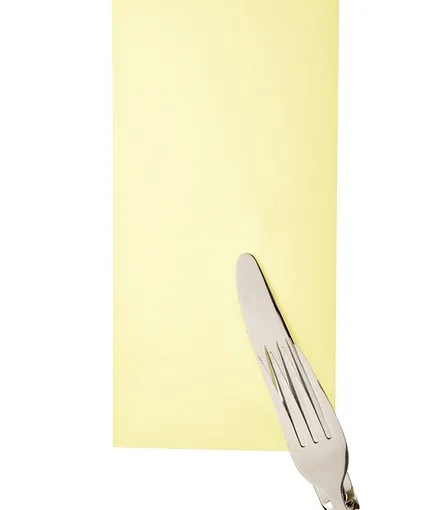First off, painter’s tape is designed to be gentle. Think of it as the soft-spoken friend who knows how to handle delicate situations. When applied correctly, it shouldn’t peel off the finish or leave behind any sticky residue. However, there are a few caveats to keep in mind. If your cabinets are freshly painted or finished, the tape might not play nice. Just like a new haircut that needs time to settle, a fresh finish needs a little patience before you start taping.
Another thing to consider is the type of tape you’re using. Not all painter’s tapes are created equal! Some are specifically designed for delicate surfaces, while others are more aggressive. It’s like choosing between a gentle hug and a bear hug—one is comforting, while the other might leave you gasping for air. So, opt for a low-tack tape if you’re working with a sensitive finish.
Also, the duration the tape stays on matters. Leaving it on for too long can lead to unwanted surprises. Imagine leaving a sticker on your favorite book for months; when you finally peel it off, it’s a sad sight. So, try to remove the tape within a few hours after painting for the best results.
In the end, with the right tape and a little care, you can protect your kitchen cabinets while achieving that crisp, clean line you’re after. So, roll up those sleeves and get ready to transform your space without the worry!
Painter’s Tape vs. Kitchen Cabinets: Will Your Finish Survive the Test?
Imagine you’ve just spent hours prepping and painting your cabinets, and now it’s time to peel off that painter’s tape. You’re excited, right? But then, horror strikes! You see bits of your freshly painted finish peeling away with the tape. It’s like watching your favorite dessert get ruined right before your eyes. So, how do you avoid this kitchen catastrophe?
First off, not all painter’s tapes are created equal. Some are designed specifically for delicate surfaces, like your freshly painted cabinets. Look for tapes labeled as “delicate” or “low-tack.” These are your best friends in this painting journey. They stick just enough to create clean lines but won’t rip off your hard work when it’s time to remove them.

Another tip? Timing is everything! If you let the paint dry too long before removing the tape, you might as well be inviting disaster. Ideally, you want to pull the tape off while the paint is still slightly tacky. Think of it like unwrapping a gift—do it too late, and you might ruin the surprise!
Lastly, always test a small area first. It’s like dipping your toes in the water before diving in. This way, you can see how your specific finish reacts to the tape. If it holds up, you’re golden! If not, you’ll save yourself a world of frustration.
So, will your finish survive the test? With the right tape, timing, and a little bit of caution, you can paint with confidence and keep your kitchen looking fabulous!
The Truth About Painter’s Tape: Can It Ruin Your Kitchen Cabinet Finish?
Imagine you’ve just spent hours meticulously painting your cabinets, only to peel off the tape and discover a sticky mess left behind. Yikes! The truth is, not all painter’s tapes are created equal. Some can indeed ruin your finish, especially if they’re left on too long or if the adhesive is too strong. It’s like inviting a friend over for dinner, only to find out they’ve raided your fridge and left a disaster in their wake!
So, what’s the secret to using painter’s tape without risking your beautiful cabinets? First, always choose a high-quality tape designed specifically for delicate surfaces. Think of it as picking the right tool for the job—using a butter knife to cut steak just won’t do! Also, timing is everything. Remove the tape while the paint is still slightly wet or just after it’s dried, but not too long after. This way, you avoid that dreaded peeling effect that can ruin your hard work.

And let’s not forget about the surface prep. If your cabinets are greasy or dirty, the tape won’t stick properly, leading to paint bleed. It’s like trying to stick a band-aid on a wet finger—it just won’t hold! So, give those cabinets a good clean before you start taping.
In the end, painter’s tape can be your best friend or your worst enemy. With the right approach, you can keep your kitchen looking sharp without any unwanted surprises.
Protecting Your Cabinets: Does Painter’s Tape Leave a Mark?
Imagine you’re gearing up for a weekend DIY project. You’ve got your paint, brushes, and that trusty roll of painter’s tape. You slap it on the edges of your cabinets, feeling like a pro. But then, the moment of truth arrives. You peel off the tape, and your heart sinks. Did it leave a mark? The good news is that painter’s tape is designed to be gentle. Most high-quality painter’s tapes won’t leave a residue or damage the surface underneath. It’s like having a protective shield that keeps your cabinets safe while you unleash your creativity.
However, not all painter’s tapes are created equal. If you grab the cheapest roll at the store, you might be in for a surprise. Some lower-quality tapes can stick too well, leaving behind a sticky mess that’s harder to clean than a toddler’s art project. So, always opt for a reputable brand. Think of it like choosing a good pair of shoes; you want something that fits well and won’t leave you with blisters!
Painter’s Tape Dilemma: Safeguarding Your Kitchen Cabinets from Damage
So, how do you safeguard your kitchen cabinets from damage while still achieving that flawless finish? First off, it’s all about the prep work. Make sure your cabinets are clean and dry. Think of it like preparing a canvas; the better the surface, the better the outcome. Next, choose a high-quality painter’s tape designed specifically for delicate surfaces. It’s like picking the right tool for the job—using the wrong one can lead to disaster.
When applying the tape, press it down firmly, but don’t go overboard. You want it to stick, but not so much that it bonds with the paint. It’s a delicate dance! And here’s a pro tip: after you tape, run a putty knife along the edge to seal it. This little trick creates a barrier that helps prevent paint from seeping underneath.
Now, let’s talk about timing. If you’re painting, wait until the paint is just dry to the touch before removing the tape. It’s like waiting for the perfect moment to catch a wave—too soon, and you wipe out; too late, and you miss the ride. By following these steps, you can navigate the painter’s tape dilemma and keep your kitchen cabinets looking sharp and pristine.
Is Painter’s Tape Safe for Kitchen Cabinets? Experts Weigh In
First off, most painter’s tapes are designed to be gentle on surfaces. Think of it like a soft hug for your cabinets. They’re made to peel off cleanly without leaving behind that sticky residue that can ruin your day. However, not all tapes are created equal. Some cheaper brands might not be as forgiving, potentially pulling off paint or finish when removed. It’s like choosing between a cozy blanket and a scratchy old sheet—one feels good, and the other? Not so much.
Now, if your cabinets are made of wood, you’ll want to be extra cautious. Experts recommend testing a small area first, just to see how your specific finish reacts. It’s like dipping your toe in the water before diving in—better safe than sorry! And if you’re dealing with a high-gloss finish, you might want to opt for a tape specifically designed for delicate surfaces.
So, is painter’s tape safe for kitchen cabinets? Generally, yes, but it’s all about choosing the right type and doing a little homework first. After all, you wouldn’t want to ruin your masterpiece before it even begins, would you?
Frequently Asked Questions
Can I Remove Painter’s Tape Without Scratching My Cabinets?
To remove painter’s tape without scratching your cabinets, gently pull the tape back at a 45-degree angle. If the tape is stuck, use a utility knife to carefully score along the edge before peeling it off. This technique minimizes the risk of damaging the surface.
What Type of Painter’s Tape is Safe for Kitchen Cabinets?
When selecting painter’s tape for kitchen cabinets, choose a low-tack, painter’s tape specifically designed for delicate surfaces. This type minimizes the risk of damaging the finish while providing clean lines during painting. Look for options labeled as safe for use on wood or cabinetry to ensure optimal results.
Will Painter’s Tape Ruin My Kitchen Cabinet Finish?
Using painter’s tape on kitchen cabinets can be safe if applied correctly. It is designed to be gentle on surfaces, but prolonged adhesion or improper removal may lead to damage. To minimize risks, ensure the tape is removed promptly after painting and test on a small, inconspicuous area first.
How to Use Painter’s Tape Without Damaging Cabinets?
To use painter’s tape effectively without damaging cabinets, ensure the surface is clean and dry before application. Press the tape down firmly to prevent paint bleed, and avoid leaving it on for extended periods. When removing, peel it back slowly at a 45-degree angle to minimize the risk of peeling off any paint or finish.
Tips for Preventing Damage When Using Painter’s Tape on Cabinets?
To prevent damage when using painter’s tape on cabinets, ensure the surface is clean and dry before application. Use a low-tack tape designed for delicate surfaces to minimize adhesive residue. Apply the tape firmly but avoid stretching it, and remove it slowly at a 45-degree angle after painting to reduce the risk of peeling paint or damaging the finish.
